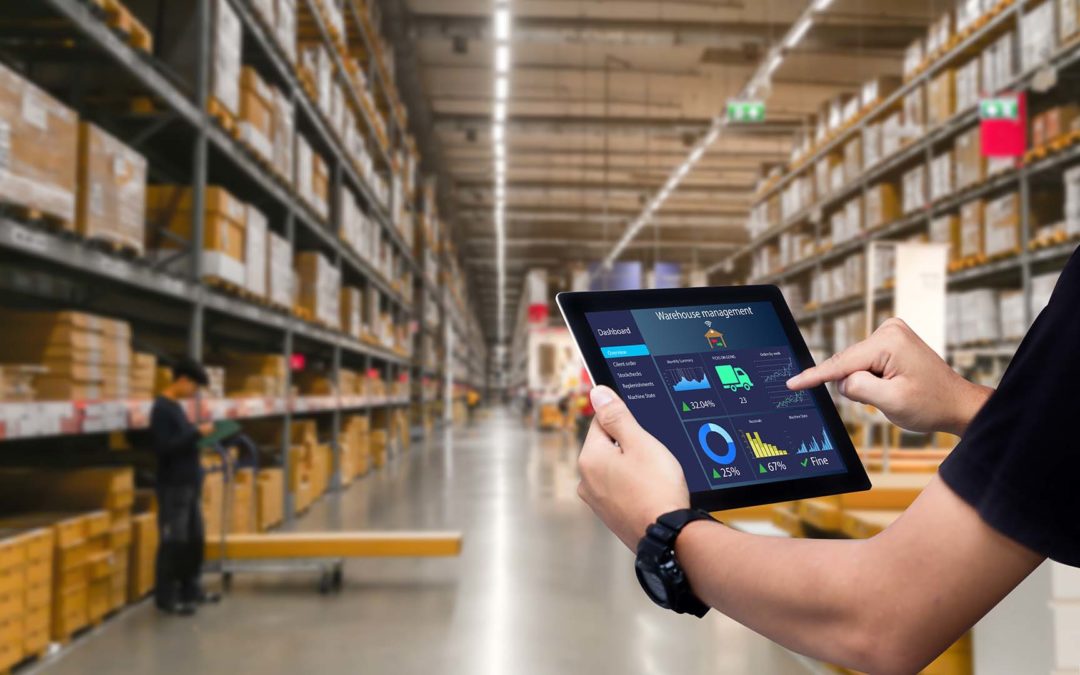New survey finds that 75% of companies see efficiency gains from implementing warehouse visibility technologies and that 72% of businesses are now focused on aligning traditional supply chain strategies with both digital and analytics solutions.
As one of the earliest members of the supply chain management software family, warehouse management systems (WMS) have been around since J.C. Penney developed the first real-time WMS in 1975. This helped the retailer reduce the amount of time employees spent looking for products and allowed them to focus on more important tasks.
The software has come a long way since then. Tasked with controlling and manage the day-to-day operations in a warehouse, modern WMS provides unparalleled levels of visibility into inventory levels both inside and outside a company’s four walls. For example, it can not only help organizations avoid over- and out-of-stocks, but it also serves as a collaboration tool for sharing information with vendors, customers, and other partners.
These capabilities translate into high levels of efficiency in the warehouse, where it wasn’t long ago that many companies were still trying to manage their inventories using paper, clipboards, and spreadsheets. According to a recent Merit Mile study of 2,500 supply chain and warehouse executives, their investment in warehouse visibility solutions is paying off on several different fronts.
For starters, the survey revealed that over 75% of executives are seeing an increase in efficiency from implementing warehouse visibility technologies, with a quarter seeing between a 10% – 15% increase, and more than half seeing between a 5% – 10% increase. Another one-third said they’re seeing a 10% – 15% increase in operational savings and one-half said they’re experiencing a 5% – 10% operational cost savings as a result of warehouse visibility technologies that were implemented.
“Supply chain systems globally are feeling pressure of various types, with everything from constrained transportation systems, labor workforce challenges, and supplier material shortages,” Global Trade points out. “What this survey shows is that thousands of supply chain executives realize that the warehouse is central to the entire supply chain operation. Incorporating better visibility regarding what data means to their operation will enable quicker decisions in real-time.”
More Warehouse Visibility, Please
To stay competitive, Merit Mile says modern supply chain managing experts are focusing on better visibility and use of data inside the warehouse, the central point of operations for each supply chain. Companies are now turning to warehouse visibility insights that provide warehouse operators with the insights they need to turn analytics data into real-time, actionable processes.
Good warehouse visibility also helps companies quickly resolve supply chain exceptions before they escalate into major problems; allows companies to define key milestones in their order flows; and sends custom alerts that inform key stakeholders about problems in real-time. With these valuable insights in hand, managers and leaders can make proactive decisions about inventory and stock levels sooner rather than later.
Over the next 12-24 months, Global Trade says 72% of businesses will be focused on aligning traditional supply chain strategies with both digital and analytics solutions. Sixty-four percent said they’ll be focused on defining an advanced supply chain systems strategy. Another 34% said their focus will be on executions and refinement of newly installed systems and solutions.
“Half of all companies polled said they plan to implement warehouse visibility technologies over the next 12 months,” Global Trade adds. “A third of those companies polled said they will be considering the implementation of such systems. These steps are just the first of many to come in order to perfect the supply chain systems and reduce the visibility issues of the supply chain.”
 IntelliTrans Providers High Levels of Warehouse and Inventory Visibility
IntelliTrans Providers High Levels of Warehouse and Inventory Visibility
IntelliTrans’ Transload/Warehouse Management provides total visibility into inventory across multiple warehouses and modes of transportation. By integrating transportation management systems (TMS) data with other internal data sources (i.e., ERP and WMS), companies can gain high levels of visibility into their end-to-end supply chain operations.
IntelliTrans’ Global Control Tower provides high levels of supply chain transparency; aggregates, completes, and enhances data from a variety of sources; offers visibility into and execution of different aspects of the supply chain; and generates data-driven alerts and analytics that ask deeper questions and deliver meaningful insights.
By leveraging tracking information, the Global Control Tower provides analytics that measures key performance indicators (KPIs) like fleet cycle time, origin/destination dwell time, lane and hauler performance, back orders, freight spend, load optimization, and more. With their rate, equipment, lease, tracking, and invoice data in a central repository that’s accessible 24/7, companies can position themselves for success in any market conditions.

